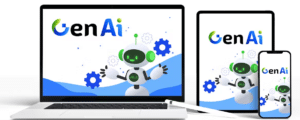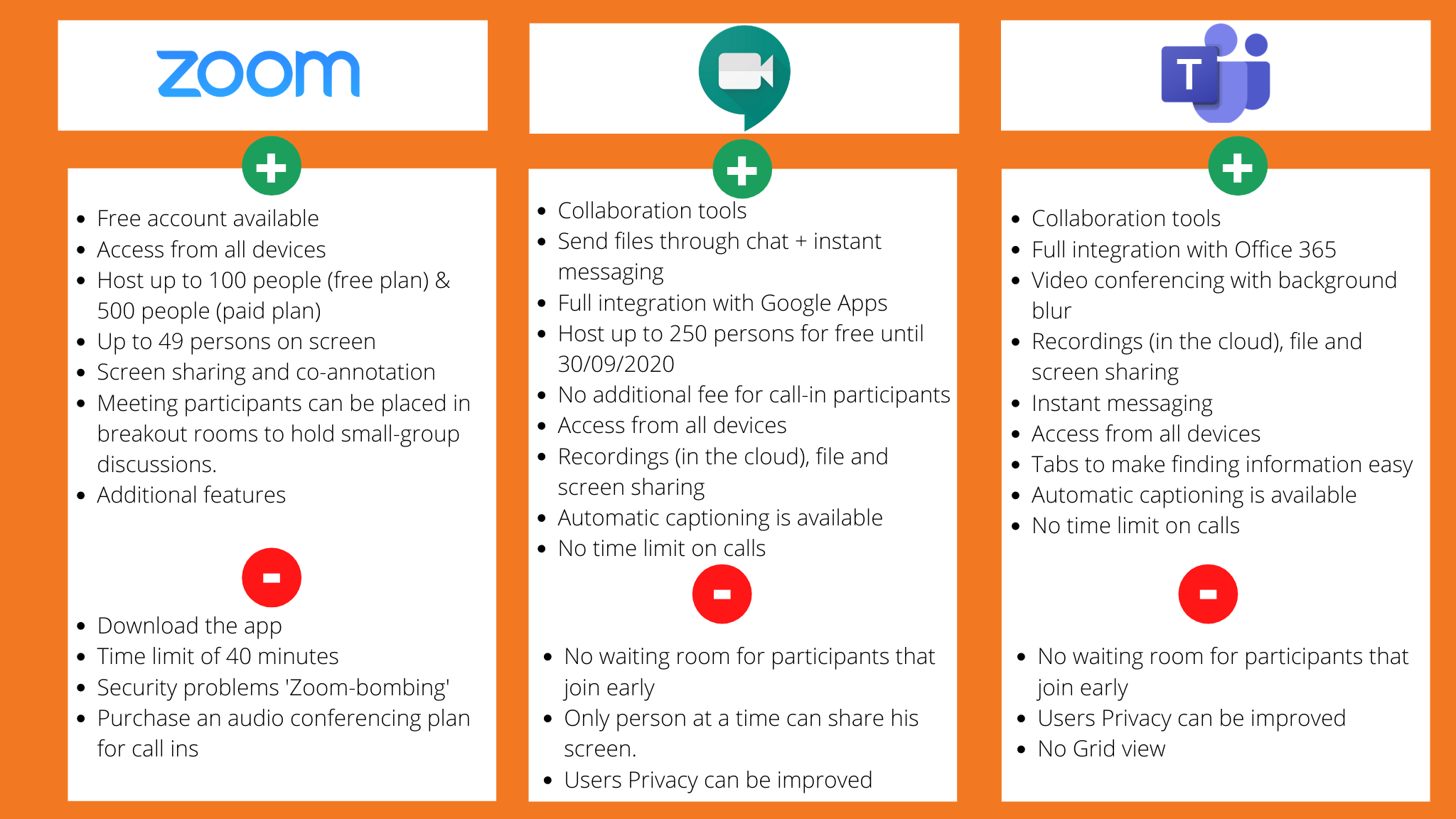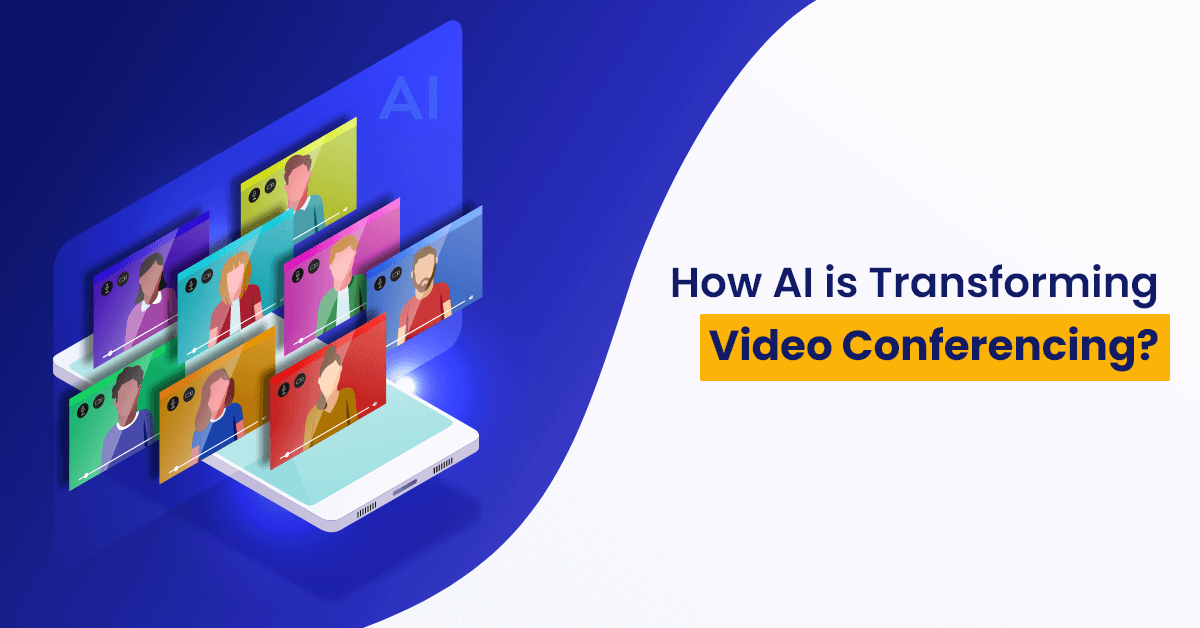Get all GEN AI OTO links to the direct sales pages. With the big discount and three hot bonus packages, with GEN AI OTO hot bonuses packages value $40k, let’s dive into the world of AI-powered video conferencing and discover how this technology is revolutionizing the way we connect and communicate online. see all the GEN AI OTO sales pages below, with all the information for each OTOs.
GEN AI OTO
Note: We recommend getting the bundle deal edition ” FE + All Upgrades version ” and save $315
>> Front-End <<
>> OTO1 Pro Edition <<
>> OTO2 DFY Setup Edition <<
>> OTO3 DFY Template Edition <<
>> OTO4 infinite traffic Edition <<
>> OTO5 agency Edition <<
>> OTO6 profit niche Edition <<
>> OTO7 Reseller Edition <<
In this article, we will explore the fascinating ways in which artificial intelligence (AI) enhances the video conferencing experience on popular platforms like Google Meet or Zoom. From AI-powered background noise cancellation to intelligent framing that keeps you centered in the frame, these platforms have integrated AI in various ways to make your video calls more seamless and productive.
GEN AI OTO – Automatic Noise Cancellation
AI-powered background noise reduction
With AI-powered background noise reduction, video conferencing platforms like Google Meet and Zoom are able to effectively suppress unwanted sounds while you engage in virtual meetings. Whether it’s the sound of traffic outside your window, the humming of an air conditioner, or the chatter of colleagues in the background, AI algorithms work in real-time to minimize these distractions and ensure that your voice takes center stage. By automatically analyzing the audio input, the AI system identifies non-speech sounds and dynamically adjusts audio settings to enhance clarity and reduce noise, resulting in a more pleasant and uninterrupted communication experience.
Real-time suppression of unwanted sounds
Thanks to AI technology, video conferencing platforms can now provide real-time suppression of unwanted sounds. Imagine being in an important meeting and suddenly a dog starts barking loudly in the background. With AI’s ability to identify and filter out specific sounds, such as barking dogs, typing on a keyboard, or ringing phones, distractions like these are instantly reduced, ensuring that the focus remains on the conversation at hand. By adapting to the ever-changing audio environment, AI algorithms continuously learn and improve, providing you with an optimal audio experience throughout your video conference.
Enhanced audio clarity
One of the main benefits of AI-powered noise cancellation is the enhanced audio clarity it provides. By reducing background noise and focusing on the speaker’s voice, AI algorithms bring out the nuances of speech, making it easier to understand and follow the conversation. Whether you’re in a crowded office, a noisy café, or even in the comfort of your own home, AI technology helps ensure that every spoken word is crystal clear. This not only improves communication between participants but also reduces the need for repeating and clarifying statements, ultimately saving time and increasing productivity during video conferences.
GEN AI OTO – Virtual Backgrounds
Real-time removal of background and insertion of new image or video
Virtual backgrounds have become increasingly popular in video conferencing, allowing users to customize their surroundings and project a professional or creative image. With AI integration, platforms like Google Meet and Zoom can now offer real-time removal of your physical background and replace it with a new image or video of your choice. Whether you’re in your home office or a busy coffee shop, AI algorithms intelligently identify and separate your body from the background, creating a seamless effect that appears natural and visually appealing to other participants.
Natural rendering and tracking of body movements
The use of AI in virtual backgrounds goes beyond just replacing the background. Advanced AI algorithms are capable of accurately tracking your body movements in real-time, ensuring that your virtual background adjusts and follows you as you move. This natural rendering creates a more immersive and lifelike experience, enhancing the sense of presence and reducing the feeling of being disconnected from others. Whether you’re presenting, demonstrating a product, or simply engaging in a conversation, the dynamic virtual background adapts seamlessly to your actions, creating a professional and engaging video conferencing environment.
Improved appearance and privacy
Virtual backgrounds not only enhance your appearance during video conferences but also provide an added layer of privacy. Whether you’re working from a cluttered space or simply want to maintain a level of anonymity, AI-powered virtual backgrounds allow you to present yourself in a setting that suits your needs. From elegant office spaces to serene natural landscapes, the choice is yours. Furthermore, by removing personal objects or sensitive information from view, virtual backgrounds help safeguard your privacy and ensure that your video conferences remain professional and focused on the task at hand.
GEN AI OTO – Auto-Transcription and Closed Captioning
Automatic generation of meeting transcripts
AI technology has revolutionized the way meetings are documented. With automatic transcription, platforms like Google Meet and Zoom can generate accurate meeting transcripts in real-time. This means that as the conversation unfolds, AI algorithms work behind the scenes to convert spoken words into written text, eliminating the need for manual note-taking or relying on participants’ memory. Accessible and editable transcripts not only serve as a detailed record of the meeting but also allow for easy searching and referencing, making it convenient to revisit specific points or share important information with colleagues.
Accurate transcription of spoken words
Gone are the days of struggling to decipher garbled or misheard words during a video conference. AI-powered auto-transcription ensures accurate and reliable conversion of spoken words into written text. By leveraging advanced natural language processing algorithms, AI systems are capable of understanding different accents, speech patterns, and contextual nuances, resulting in highly accurate transcriptions. This not only benefits individuals with hearing impairments who rely on text-based communication but also aids in minimizing miscommunication and misunderstandings among participants, leading to more effective and productive discussions.
Enhanced accessibility for individuals with hearing impairments
Video conferencing platforms with AI-based auto-transcription and closed captioning features have greatly improved accessibility for individuals with hearing impairments. By providing real-time captions of spoken words, these platforms allow individuals who are deaf or hard of hearing to actively participate in meetings and understand the conversation without relying solely on lip-reading or sign language interpretation. The inclusion of AI technology in video conferencing software has made it possible to bridge the communication gap, ensuring that everyone can fully engage and contribute to the discussion, regardless of their hearing abilities.
GEN AI OTO – Gesture and Emotion Recognition
Real-time detection of hand gestures
AI technology has brought the concept of non-verbal communication to video conferences. By leveraging computer vision algorithms, platforms like Google Meet and Zoom can now detect and interpret hand gestures in real-time. Whether it’s waving, pointing, or demonstrating an object, AI algorithms analyze the video feed and accurately recognize these gestures, translating them into meaningful actions within the virtual meeting space. This capability adds a new dimension to communication, enabling more interactive and engaging discussions, particularly in situations where verbal communication may be limited or challenging.
Identification of facial expressions and emotions
Facial expressions play a crucial role in conveying emotions and non-verbal cues during face-to-face interactions. With AI-powered facial expression recognition, video conferencing platforms can now detect and interpret these expressions in real-time, making virtual meetings more engaging and expressive. Whether it’s a smile, a raised eyebrow, or a frown, AI algorithms accurately analyze the face and provide insights into the emotional state of participants. This not only helps foster a more empathetic and connected environment but also enables participants to gauge the reactions and sentiments of others, leading to more effective communication and collaboration.
Improved non-verbal communication
The integration of AI technology in video conferencing platforms has significantly enhanced non-verbal communication. By recognizing hand gestures, facial expressions, and emotions, these platforms enable participants to express themselves more naturally and effectively, even in a remote setting. Whether you’re giving a presentation, conducting a training session, or simply engaging in casual conversations, the ability to convey non-verbal cues helps to bridge the physical distance and creates a more personable and interactive experience. AI-powered gesture and emotion recognition contribute to better understanding, collaboration, and teamwork, ultimately leading to more successful outcomes in virtual meetings.
GEN AI OTO – Speaker Tracking
Automatic identification and tracking of active speaker
In large group meetings or conferences, it can be challenging to keep track of who is speaking, as multiple participants may try to contribute simultaneously. With the help of AI, video conferencing platforms now have the capability to automatically identify and track the active speaker in real-time. By analyzing audio and video streams, AI algorithms can determine who is currently speaking and adjust the visual display accordingly, highlighting the active speaker to ensure that their voice is heard and attention is focused on them. This feature greatly enhances the overall meeting experience and promotes efficient communication and engagement.
Visual emphasis on active speaker
AI-powered speaker tracking not only identifies the active speaker but also provides visual emphasis on them. By prominently displaying the video feed or image of the active speaker, participants can easily identify who is talking, even in a large conference with numerous attendees. This visual emphasis not only helps to maintain focus during the meeting but also assists individuals who may rely on visual cues to understand who is speaking, such as those with hearing impairments. The combination of automatic speaker identification and visual emphasis improves communication dynamics and ensures that all participants feel included and engaged.
Enhanced engagement and attention during meetings
With AI-powered speaker tracking, video conferencing platforms foster enhanced engagement and attention during meetings. By automatically highlighting the active speaker, participants are more likely to pay attention to the speaker’s words and non-verbal cues, leading to improved comprehension and active participation. This feature eliminates the need for constant manual adjustment of focus or speaker identification, allowing participants to concentrate on the content being presented or discussed. By enhancing engagement and attention, AI-powered speaker tracking contributes to more effective and productive meetings.
GEN AI OTO – Intelligent Noise Suppression
AI-based filtering of non-speech sounds like keyboard typing
Intelligent noise suppression has revolutionized the audio quality of video conferences by leveraging AI to filter out non-speech sounds like keyboard typing or background music. By analyzing the audio input in real-time, AI algorithms can identify and attenuate these distracting noises, allowing the speech of participants to come through clearly and intelligibly. This feature greatly enhances the audio experience and minimizes distractions, ensuring that the focus remains on the conversation and reducing the likelihood of miscommunication.
Improved audio quality and intelligibility
AI-based noise suppression leads to improved audio quality and intelligibility during video conferences. By reducing the presence of non-speech sounds, the clarity and fidelity of participants’ voices are significantly enhanced, creating a more immersive and pleasant listening experience for all. Whether you’re presenting, brainstorming, or engaging in in-depth discussions, the elimination of background noise through AI technology ensures that every word is heard clearly, minimizing the need for repetitions or clarification. Improved audio quality contributes to more effective communication and fosters a productive and engaging meeting environment.
Minimized distractions and interruptions
With intelligent noise suppression, distractions and interruptions that often arise from non-speech sounds are significantly minimized. AI algorithms are capable of identifying and filtering out common noises like keyboard typing, mouse clicks, or background conversations, thus providing a focused and distraction-free audio environment. By reducing these auditory distractions, participants can fully concentrate on the discussion at hand, leading to more efficient and meaningful interactions. The ability to minimize interruptions through AI-based noise suppression contributes to smoother and more productive video conferences.
GEN AI OTO – Real-time Language Translation
Automatic translation of spoken language
Language barriers no longer pose a significant hurdle in international video conferences, thanks to the integration of AI technology. Real-time language translation capabilities in platforms like Google Meet and Zoom allow spoken words in one language to be automatically translated into another, enabling seamless cross-language communication. By leveraging advanced machine learning algorithms, AI systems can accurately and instantaneously convert the spoken language, ensuring that participants can understand and contribute to the conversation, regardless of their native language.
Multi-language support and communication
AI-powered language translation in video conferencing platforms provides multi-language support, allowing participants to communicate effectively and effortlessly in their preferred language. Whether it’s a multilingual collaborative project or a global conference, AI technology facilitates smooth and inclusive communication. With support for numerous languages, participants can focus on expressing their ideas and thoughts, knowing that their message will be accurately translated and understood by others. This multi-language capability breaks down language barriers and fosters a more inclusive and collaborative environment.
Breaking language barriers
The integration of real-time language translation in video conferencing platforms effectively breaks down language barriers, enabling global communication and collaboration. No longer do participants have to struggle with language differences or rely on external translators. With the aid of AI, barriers created by language diversity are overcome, allowing for seamless and natural discussions across different cultures and languages. This not only enhances the efficiency and productivity of international meetings but also encourages cross-cultural understanding and cooperation, fostering a more connected and inclusive global community.
Facial Recognition and Authentication
Verification of participants’ identity using facial recognition
In order to ensure secure and authenticated access to video conferences, platforms like Google Meet and Zoom incorporate AI-powered facial recognition technology. By analyzing facial features, AI algorithms can verify the identity of participants, preventing unauthorized access and maintaining the privacy and security of the meeting. This feature provides an extra layer of protection, particularly for sensitive discussions or high-security meetings, where only verified individuals are granted access.
Enhanced security and prevention of unauthorized access
Facial recognition and authentication powered by AI significantly enhance the security of video conferencing platforms. By verifying the identity of participants before granting access, potential risks associated with unauthorized users are greatly mitigated. This feature ensures that only authorized individuals can join the meeting, providing peace of mind and safeguarding confidential information. The integration of facial recognition and authentication represents a proactive approach to security, protecting against potential breaches and preserving the integrity of virtual meetings.
Streamlined authentication process
AI-powered facial recognition streamlines the authentication process, making it quick, convenient, and efficient for participants to join video conferences. Once registered, participants can simply enter the video conference and be automatically authenticated by the system through facial recognition. This eliminates the need for cumbersome login procedures or the sharing of passwords, saving time and reducing the possibility of errors or security vulnerabilities. The streamlined authentication process enhances the user experience and removes barriers to participation, promoting seamless and hassle-free virtual meetings.
GEN AI OTO – Automated Meeting Scheduling and Follow-ups
AI-assisted scheduling based on participants’ calendars
The integration of AI technology in video conferencing platforms has revolutionized the meeting scheduling process. AI-assisted scheduling allows platforms like Google Meet and Zoom to seamlessly analyze participants’ calendars and propose suitable meeting times that minimize conflicts. By leveraging machine learning algorithms, AI systems can efficiently schedule meetings, taking into account participants’ availability, time zones, and preferences. This automation eliminates the need for manual back-and-forth coordination, saving time and effort for all involved.
Automated email reminders and follow-up summaries
AI technology has simplified the process of managing meeting logistics by automating email reminders and follow-up summaries. Video conferencing platforms with AI capabilities can automatically send email reminders to participants, ensuring that everyone is well-prepared and on time for the meeting. Additionally, AI algorithms can generate follow-up summaries, highlighting key discussion points, action items, and decisions made during the meeting. These automated summaries serve as a valuable reference and facilitate accountability, ensuring that outcomes and tasks are properly communicated and executed.
Time-saving and improved organization
The introduction of AI-assisted meeting scheduling and follow-ups saves valuable time and improves organizational efficiency. By automating the scheduling process, participants no longer need to manually coordinate and negotiate meeting times, as AI algorithms handle the task seamlessly. The automated email reminders and follow-up summaries enhance communication and streamline post-meeting documentation, eliminating the need for manual reminders and note-taking. The time-saving benefits provided by AI-integrated video conferencing platforms allow individuals to focus on important tasks and contribute more effectively, ultimately improving productivity and organizational workflow.
GEN AI OTO – Summary
Effective integration of AI in video conferencing platforms
The effective integration of AI technology in video conferencing platforms like Google Meet and Zoom has transformed the way we communicate and collaborate remotely. From automatic noise cancellation to virtual backgrounds, AI’s impact is apparent in enhancing user experience and functionality. AI algorithms intelligently suppress background noise, improving audio clarity and minimizing distractions. Virtual backgrounds and gesture recognition bring a sense of immersion and engage participants in a more natural way. Auto-transcription and closed captioning enable accurate documentation and accessibility for individuals with hearing impairments.
Improved user experience and functionality
The integration of AI has significantly improved the user experience and functionality of video conferencing platforms. With features like speaker tracking and intelligent noise suppression, participants can effortlessly navigate and engage in meetings, ensuring that the active speaker is highlighted and distractions are minimized. Real-time language translation breaks down language barriers, facilitating seamless cross-cultural communication. Facial recognition and authentication ensure secure and authorized access to meetings. Automated meeting scheduling and follow-ups save time and enhance organizational efficiency. In summary, AI’s integration elevates the overall experience of video conferencing, making it more efficient, inclusive, and productive.
Continuous advancements in AI technology
As AI technology continues to advance, we can expect further enhancements in video conferencing platforms. Ongoing research and development aim to refine existing features and introduce new capabilities that further improve communication and collaboration. From more accurate noise cancellation algorithms to advanced facial and emotion recognition, AI will continue to augment our virtual meeting experiences. These continuous advancements in AI technology ensure that video conferencing platforms remain at the forefront of innovation, constantly adapting to meet the evolving needs and expectations of users in an increasingly digital world.




